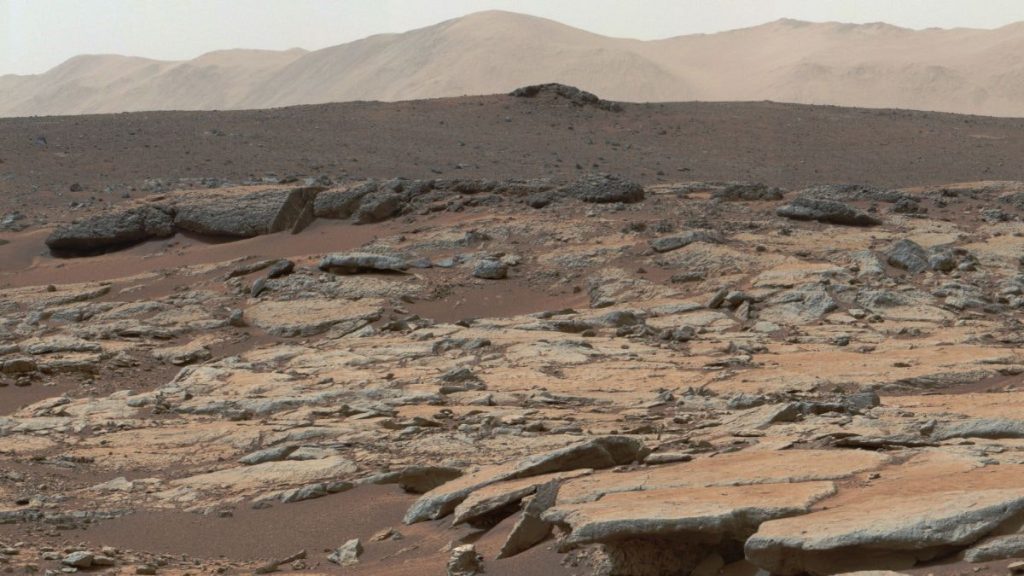
Images from NASA’s Curiosity mission may reveal evidence of climate change on Mars, including past water surface drying out.
The results were published last week in a NASA statement on the decade-long Curiosity mission.
“We no longer see the lake sediments we saw years ago low on Mount Sharp,” He said Ashwin Vasavada, Curiosity project scientist at NASA’s Jet Propulsion Laboratory in Southern California.
Instead, we see plenty of evidence of drier climates, such as dry sand dunes that were sometimes swirled by streams. This is a big change from the lakes that lasted perhaps for millions of years before that.
Over the past year, the Curiosity probe has traveled through a transition region from a “mud-rich region” to a sulfate-rich region, the statement noted. The observations could provide a record of an ancient shift in the Red Planet’s climate change.
Images of finger-like rocks have also supported the possibility that groundwater may have moved through certain regions of Mars.
It likely formed billions of years ago when groundwater moved up, leaving minerals behind. In the Martian atmosphere, winds eroded the softer parts and left the hardest parts behind,” the Curiosity Rover Twitter account noted along with an example of a single image.
Fingerlings… rocks? I spotted these strange shapes when I was exploring. It likely formed billions of years ago when groundwater moved up, leaving minerals behind. In the Martian atmosphere, winds eroded the softer parts and left the tougher parts behind. https://t.co/XKbiJuUMEC pic.twitter.com/U091p6DOf1
– Curiosity Rover (MarsCuriosity) June 15, 2022
Curiosity’s mission has already revealed images that support the view that ancient Mars experienced a climate that may have included long-lasting lakes.
is not it?
I trek through a transition zone between an area rich in mud and one full of sulfur. Groundwater and its flow recede over time through these geological features, leaving a puzzle I can’t wait for my team to solve. https://t.co/umIr7ctS3r pic.twitter.com/gZ8aSzYwtn– Curiosity Rover (MarsCuriosity) June 22 2022
In 2014, an investigation into Gale Crater suggested that the flow of water and sediment may have been massive enough to build the three-mile-high Mount Sharp.
“If our Mount Sharp hypothesis holds, it challenges the idea that warm, wet conditions were transient, local, or only underground on Mars,” Vasavada He said Regarding previous results.
“The most radical explanation is that the thick ancient atmosphere of Mars raised temperatures globally above freezing, but until now we don’t know how the atmosphere did that,” he added.
In 2013, NASA note Sedimentary rocks have led to the suggestion that Mars once contained fresh water. Photos in 2012 also noticed small rocks that appeared to have been smoothed and shaped by water.
Much speculation circulated online after a single image of Curiosity surfaced showing a “door” on Mars. However, NASA noted that the image captured a natural geological feature, despite the familiar door-like appearance.
Some of you have noticed this picture I took on Mars. Sure, it may look like a small door, but it’s really a natural geological feature! It may seem like a door just because your mind is trying to make sense of the unknown. (This is called “pareidolia”) https://t.co/TrtbwO7m46 pic.twitter.com/VdwNhBkN6J
– Curiosity Rover (MarsCuriosity) May 18 2022
The discussion of water on Mars is not limited to the Curiosity mission. NASA has been investigating evidence of ancient water on the planet since the 1970s.
“Scientists have traced ancient water paths through Mars since the 1970s, when orbiters revealed networks of branching valleys that match the dendritic shape of water-eroded valleys on Earth,” Science Magazine mentioned. “In the 1990s, the Global Mars Surveyor program zoomed in on deeply dug grooves that could only be carved by powerful flows of water—and perhaps even glimpses of shorelines from an ancient ocean.”




More Stories
Boeing May Not Be Able to Operate Starliner Before Space Station Is Destroyed
Prehistoric sea cow eaten by crocodile and shark, fossils say
UNC student to become youngest woman to cross space on Blue Origin